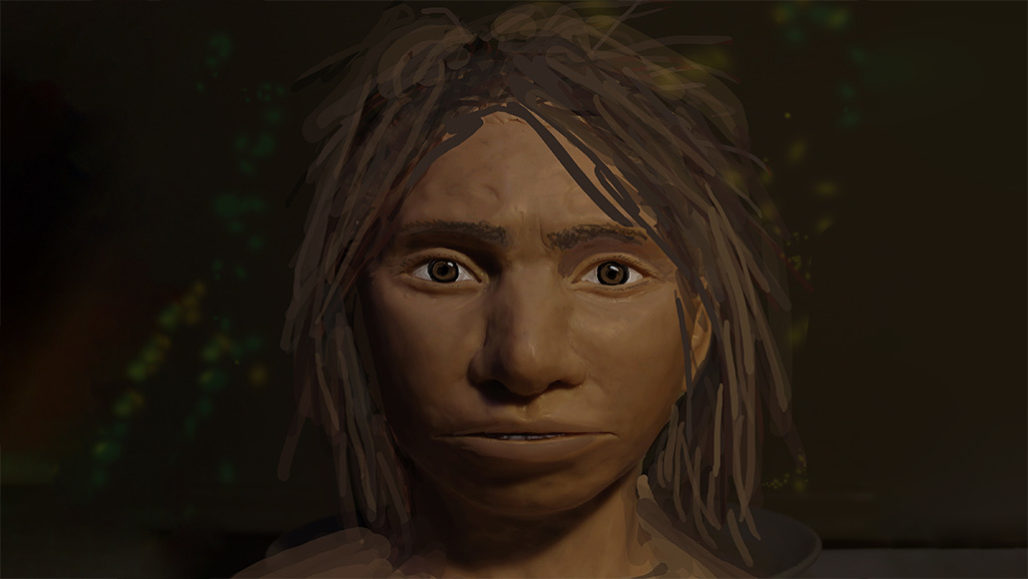Anthropology
Related: About this forumNeanderthal Noses Influence Human Honkers
May 8, 2023 University College London
Humans have inherited genetic material from Neanderthals that affects the shape of our noses, according to a new study led by researchers from UCL.
The study used data from more than 6,000 volunteers across Latin America to compare genetic information from the participants to photographs of their faces. They looked specifically at distances between points on their faces, such as the tip of the nose or the edge of the lips, to see how different facial traits were associated with the presence of different genetic markers. The researchers newly identified 33 genome regions associated with face shape, 26 of which they were able to replicate in comparisons with data from other ethnicities using participants in east Asia, Europe, or Africa.
One genome region in particular, called ATF3, stood out to the researchers. Many people in their study with Native American ancestry had genetic material in this gene that was inherited from the Neanderthals, contributing to increased nasal height. The researchers found that this gene region has signs of natural selection, suggesting that it conferred an advantage for those carrying the genetic material. The study’s co-corresponding author, Dr Kaustubh Adhikari, said, “Here, we find that some DNA inherited from Neanderthals influences the shape of our faces. This could have been helpful to our ancestors, as it has been passed down for thousands of generations.”
The study’s first author, Dr Qing Li, explained that the shape of our noses is speculated to be determined by natural selection as our noses can help us to regulate the temperature and humidity of the air we breathe in. Different shaped noses may be better suited to different climates that our ancestors lived in. The gene identified in the study may have been inherited from Neanderthals to help humans adapt to colder climates as our ancestors moved out of Africa. The co-corresponding author, Professor Andres Ruiz-Linares, added, “Most genetic studies of human diversity have investigated the genes of Europeans; our study’s diverse sample of Latin American participants broadens the reach of genetic study findings, helping us to better understand the genetics of all humans.”
More:
https://scienceblog.com/537734/neanderthal-noses-influence-human-honkers/
Checked google images for an approximation of:

"ancient Denisovan face shape"
Judi Lynn
(162,336 posts)Date:
May 8, 2023
Source:
University College London
Summary:
Humans inherited genetic material from Neanderthals that affects the shape of our noses, finds a new study.
Humans inherited genetic material from Neanderthals that affects the shape of our noses, finds a new study led by UCL researchers.
The new Communications Biology study finds that a particular gene, which leads to a taller nose (from top to bottom), may have been the product of natural selection as ancient humans adapted to colder climates after leaving Africa.
Co-corresponding author Dr Kaustubh Adhikari (UCL Genetics, Evolution & Environment and The Open University) said: "In the last 15 years, since the Neanderthal genome has been sequenced, we have been able to learn that our own ancestors apparently interbred with Neanderthals, leaving us with little bits of their DNA.
"Here, we find that some DNA inherited from Neanderthals influences the shape of our faces. This could have been helpful to our ancestors, as it has been passed down for thousands of generations."
The study used data from more than 6,000 volunteers across Latin America, of mixed European, Native American and African ancestry, who are part of the UCL-led CANDELA study, which recruited from Brazil, Colombia, Chile, Mexico and Peru. The researchers compared genetic information from the participants to photographs of their faces -- specifically looking at distances between points on their faces, such as the tip of the nose or the edge of the lips -- to see how different facial traits were associated with the presence of different genetic markers.
More:
https://www.sciencedaily.com/releases/2023/05/230508104930.htm
2naSalit
(92,378 posts)Warpy
(113,130 posts)and she'd still get dates, even today.
The skull shapes might be markedly different, but the reconstructions show them to be very recognizably human.
PoindexterOglethorpe
(26,607 posts)Even as a brand new infant. My husband and I were grateful it was a son, not a daughter with that nose.